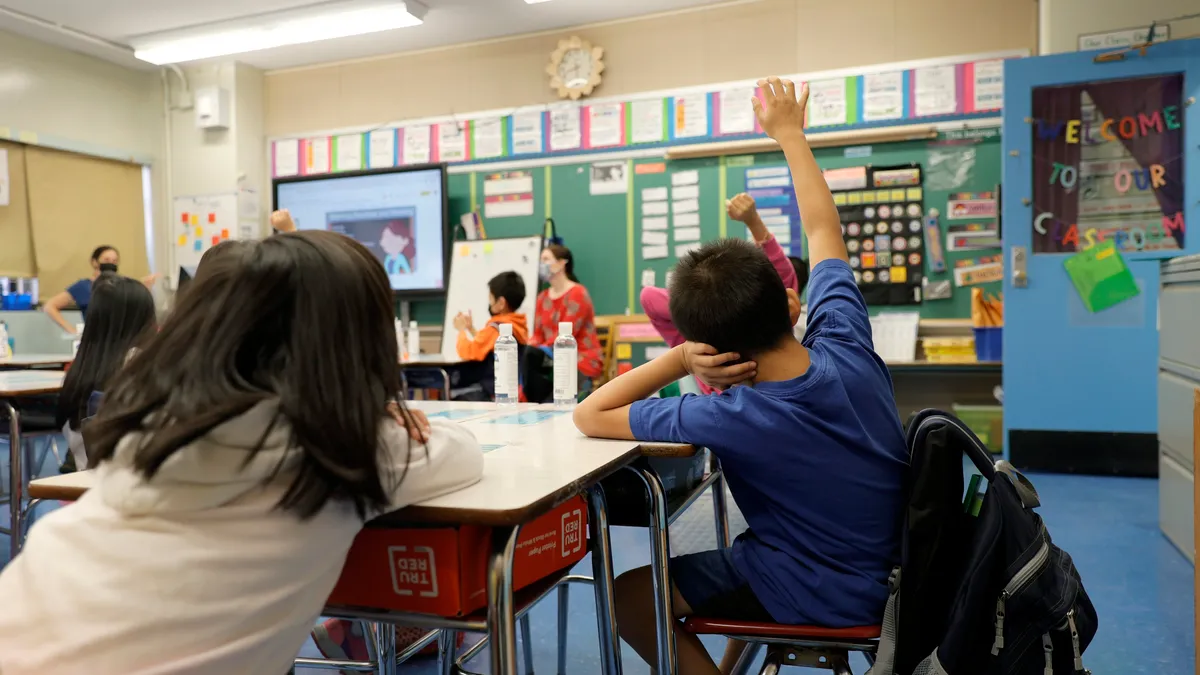Analysis of testing data from the 2021-22 school year shows promising trends of academic rebound for students in grades 3-8, but it also reveals student achievement remains lower than expected had the pandemic not occurred.
In the latest school year, researchers noted academic gains in math and reading on MAP Growth assessments from fall to spring in most grades, paralleling pre-pandemic trends, especially among younger students. Year over year improvements were found as well. For example, researchers found a 27% improvement in math test scores between spring 2021 3rd-grade test takers and spring 2022 4th-grade test takers.
These are encouraging findings that show signs that learning recovery efforts are helping students gain ground after COVID-19 disruptions, said Karyn Lewis, director of the Center for School and Student Progress at NWEA. Lewis coauthored the report on achievement levels.
Lewis noted the gains are encouraging, considering the 2021-22 school year continued to experience pandemic-related effects including closures, quarantines and staff shortages.
"I think we don't want to lose sight of how much there is to celebrate and [the fact] that we saw any improvement whatsoever," Lewis said.
Nonetheless, she said it is too soon to declare a national academic achievement comeback. That's because the pace of achievement gains indicates several more years — more than five for some grade cohorts — are still needed to close achievement gaps from pre-COVID-19 academic test results compared to spring 2021 and spring 2022.
In addition,significant gaps remain between current and historic achievement levels for students of color and students attending high-poverty schools. "It's far too soon to take our foot off the gas, especially when we consider … the ground to regain for students that have been the hardest hit," Lewis said.
The research was conducted by NWEA, a nonprofit organization that provides assessments, including the MAP Growth assessments. Math and reading test score data from 8.3 million students in grades 3-8 in about 25,000 public schools was used in the research, which looks across four school years, from 2018-19 through 2021-22.
Here is a closer look at some of the findings.
Reading and math
Previous years' assessment results during the pandemic showed bigger drops in math progress compared to reading. Two theories as to why math presented more of a challenge is that it was harder to teach online and also that students have more opportunities to practice reading in everyday activities.
Still, the recent analysis shows evidence of learning rebound in both math and reading, especially for younger students.
Reading achievement improvements from spring 2021 to spring 2022
Math achievement improvements from spring 2021 to spring 2022
Lewis said research found reading improvements to be stronger from the spring to fall testing cycles. Math improvements, on the other hand, were more robust during the school year, from fall to spring testing.
Though researchers weren't sure about the reasons for that difference, Lewis suggested reading scores may be influenced by school-sponsored summer reading programs or parents' efforts to improve reading skills, Lewis said.
"It's very head-scratching why we see this difference across subjects," Lewis said.
Researchers also looked at how long it might take to close achievement gaps in reading and math if the rate of progress remains the same. They estimate it will take the average elementary school student at least three years to fully recover.
In both reading and math, middle school students showed more stagnation. It's unclear why this is, Lewis said, but what is important is the potential need for extra supports for these children, particularly as they start the path toward high school and graduation.
Change in pandemic reading achievement gaps compared to non-pandemic trends
Change in pandemic math achievement gaps compared to non-pandemic trends
School poverty levels
While researchers found achievement rebound across school poverty levels and racial and ethnic student groups, more work is needed to erase uneven impacts for these students, Lewis said.
"The ground we have to make up for those students is much larger, and we need to be making sure we're leaning in and getting them the supports they need to get back on track," Lewis said.
Average MAP Growth scores for 4th and 5th grade before and during the pandemic
Lewis advises districts to review localized data to get a better picture of how students are performing. "No school or district should just assume that the national picture is indicative of what's happening for their students," she said.
As districts continue supporting students and staff through learning recovery efforts, they should develop a plan for sustaining interventions even when federal Elementary and Secondary School Emergency Relief funds expire, NWEA recommends.












